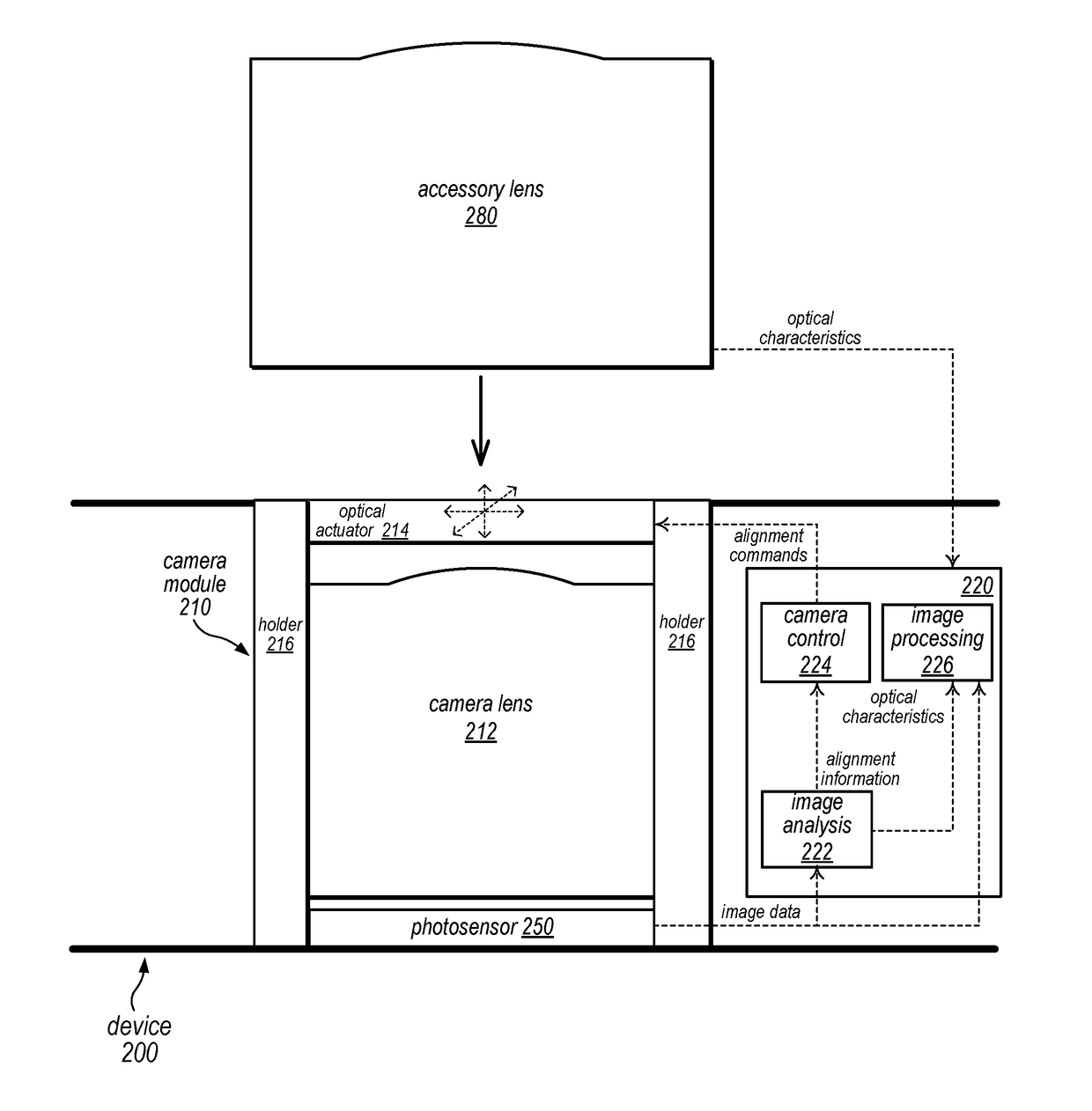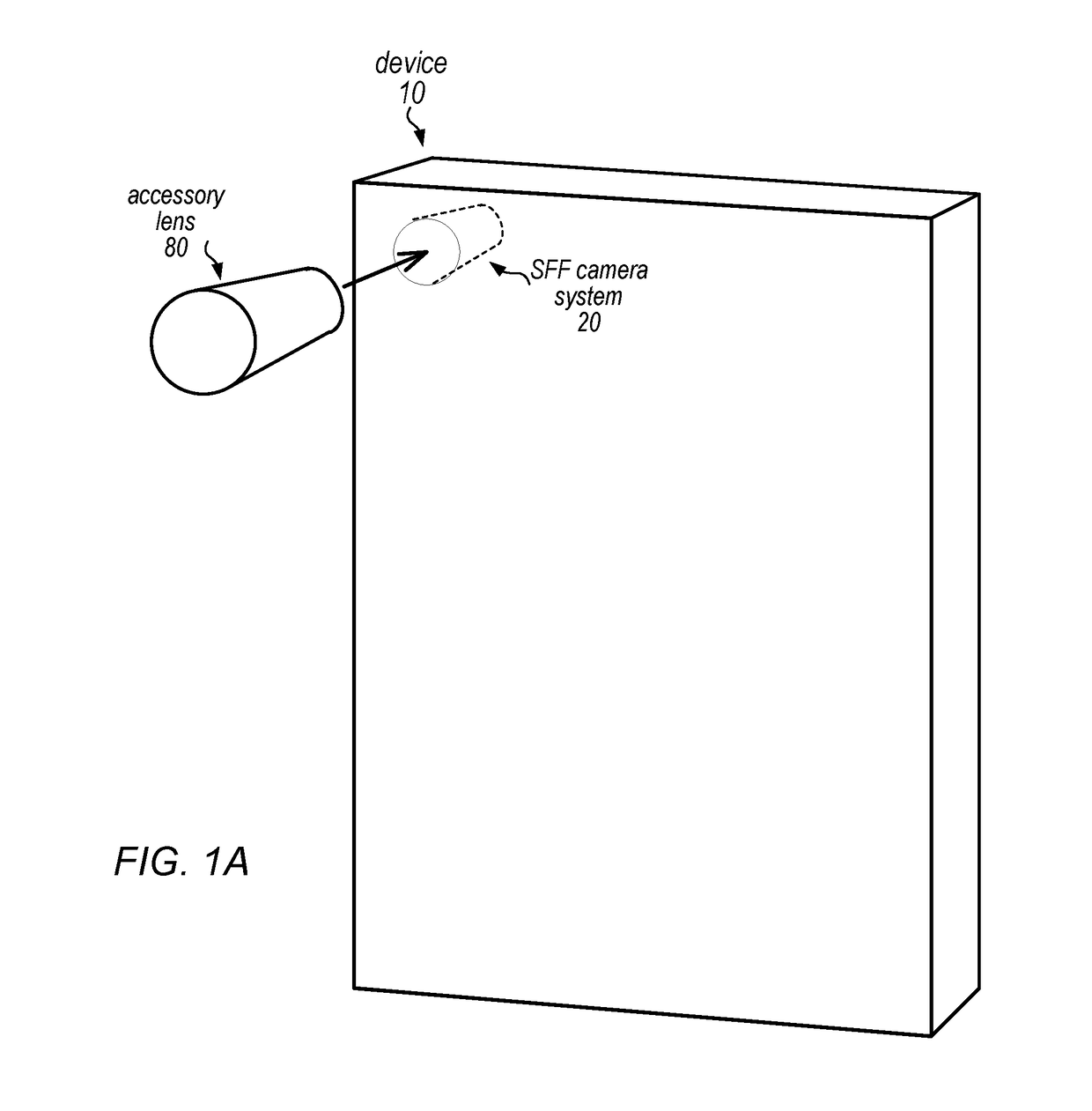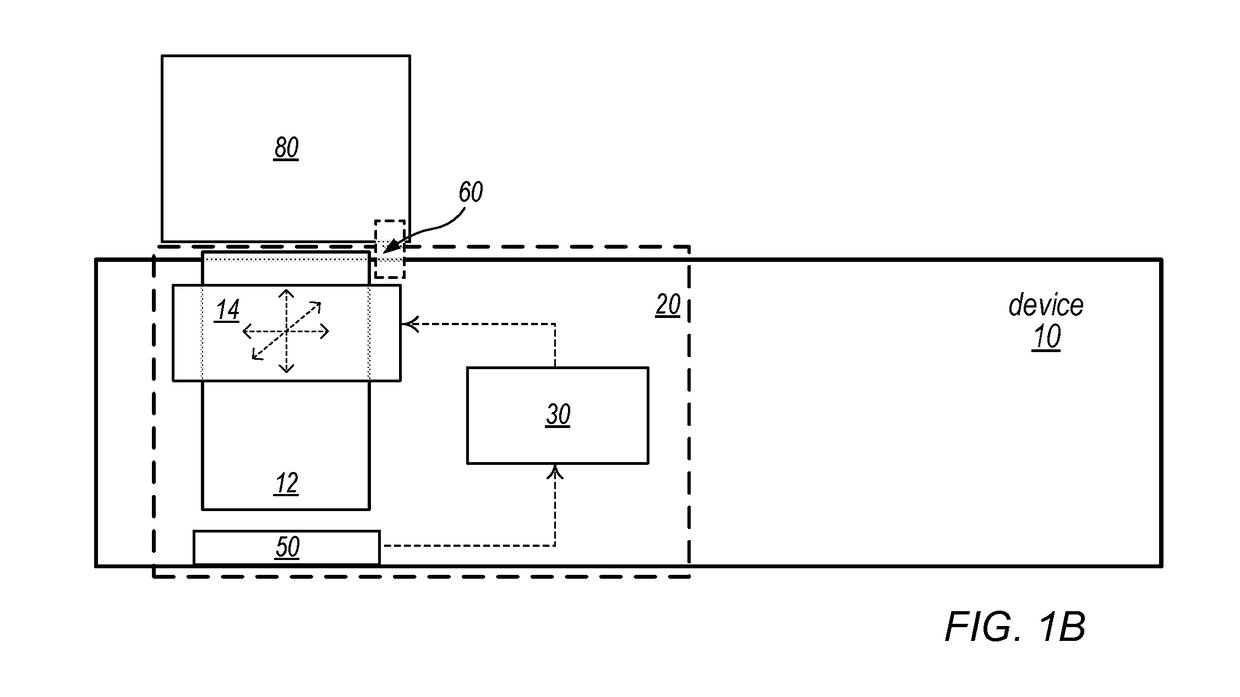Adapting camera systems to accessory lenses
a technology for accessory lenses and camera systems, applied in the field of camera systems, can solve problems such as difficult to achieve “out of the box goals, and achieve the effect of optimizing the measurement image metric and improving the alignment of the optical axis
- Summary
- Abstract
- Description
- Claims
- Application Information
AI Technical Summary
Benefits of technology
Problems solved by technology
Method used
Image
Examples
Embodiment Construction
[0003]Embodiments of the present disclosure may provide improved image quality for small format factor (SFF) cameras when using accessory lenses. SFF cameras may, for example, be used in mobile devices such as smartphones, cell phones, pad or tablet devices, and may also be used in other devices such as laptop or notebook computers. Accessory lenses may be provided that attach to or mount in front of the SFF camera's lens. These accessory lenses can be used to shrink or expand the focal length of the camera lens, or to enable closer-focusing macro capabilities, for example. To achieve optimal image quality, the optical axis of the accessory lens should be coaxial with the optical axis of the camera lens in the device to which it is attached. In addition, spacing between the accessory lens and the camera lens should be correct.
[0004]Embodiments of an SFF camera system are described that include a lens system, a photosensor, camera control, image analysis, and image processing softwar...
PUM
 Login to View More
Login to View More Abstract
Description
Claims
Application Information
 Login to View More
Login to View More - R&D
- Intellectual Property
- Life Sciences
- Materials
- Tech Scout
- Unparalleled Data Quality
- Higher Quality Content
- 60% Fewer Hallucinations
Browse by: Latest US Patents, China's latest patents, Technical Efficacy Thesaurus, Application Domain, Technology Topic, Popular Technical Reports.
© 2025 PatSnap. All rights reserved.Legal|Privacy policy|Modern Slavery Act Transparency Statement|Sitemap|About US| Contact US: help@patsnap.com



